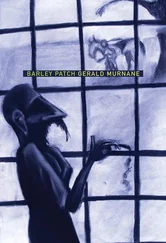Whereas I found useful the books by the American professor and borrowed from them several terms that I still sometimes use when talking or writing about fictional narration, I was inclined to scoff at the German scholar’s chart, which put me in mind of some or another inscrutable calendar or sky-map from a civilisation long since vanished. And yet, after seeming to have forgotten for nearly thirty years the concentric circles and the diametric axes and the book-titles positioned all around like tiny asteroids, I recalled them today and was compelled to mention them in this piece of fiction. At first, I supposed I had done so for no other purpose than to startle the undiscerning reader who believes that a work of fiction contains little more than reports of so-called characters, of what those characters do and say and think, and of the scenery, so to call it, in the background. But then I called to mind some of the writers of fiction in the house of two or, perhaps, three storeys where much of the action, so to call it, of this work of fiction takes place. Those personages, if I know anything about them, might have looked, long ago, into the American’s books and might even have used occasionally one or another of the American’s technical terms when speaking about their own or others’ writing but would surely have never heard of the German or of his book. If pressed to give an account of their working methods, they might fall back on the word instinct or on equally vague phrases such as the rightness of things, concern for detail , or eloquent simplicity . And yet, if I were to put in front of those personages a diagram not unlike a spider’s web, with titles of books and obscure technical terms superimposed on each of its many zones, and if I were to ask the personages whether each of their own works of fiction might be susceptible to the sort of analysis that had given rise to the diagram, I believe that each of them, fictional personages though they are, would concur with myself, the narrator of the work in which they have their existence. I believe that each of them would admit that he has sometimes got up from his desk late on some or another afternoon and has stepped to the window and has looked through the glass at a view of mostly level grassy countryside, hopeful that someone passing along a distant road and looking in his, the fictional personage’s direction, would see not a window of a house of two or, perhaps, three storeys but something as unlooked for as a spot of golden oil.

A certain personage from among those mentioned in the last sentences of the previous section might well be at work now, in whichever room he happens to occupy, on his own version of what follows.
On a certain afternoon in one of the first months of his fifteenth year, and while he was travelling in the grimy rear compartment of a second-class carriage of an electric train from the inner suburb where he attended school to the outer suburb where he lived, which two suburbs were south-east of the capital city where he had been born and were about ten kilometres apart, he noticed that a certain dark-haired girl of about his own age in a certain corner of the compartment was the same girl who had sat in the same corner on the previous afternoon. He remembers nothing of what he did or thought on either of the afternoons mentioned, but he assumes that he looked so often and so intently at the girl that she became aware of his looking, even though he had supposed that he was looking in a way that would not take her notice.
Long afterwards, he would sometimes ask himself why that one face from among the many faces of the many schoolgirls that he saw each day — why that one face had provoked him not only to look but to look in such a way as would cause him to believe, during the following weeks and months, that she whose face it was had learned already about him much more than he could have hoped to learn about her even if he had looked at her continually during the time they were together. It may have been that the girl in the railway compartment looked as a certain other dark-haired girl might have looked seven or eight years after he had last seen her in a dusty front yard of a provincial city. It may have been that the contrast between the black hair of the girl in the railway compartment and the zone of warm colour around her cheekbones recalled for him not only the last detail remaining to him of the earlier girl — a black eyebrow above a flushed cheek — but the red-stemmed green leaves of a sycamore tree, the yellow-grey dust of a front yard, the blue-grey weatherboards of a house-front, and some of the earliest intimations he would afterwards remember that the drab or the everyday, so to call them, are mere signs of another order of things. But this line of thinking led him further away from understanding how a face alone could have had such an influence on him and not even a face but a few details of a face. And while these matters exercised him, he recalled that he had never, in fact, seen her head of dark hair. Only a few strands curved past her ears from beneath the wide-brimmed, dome-topped hat of her school uniform. (Surely a bunch of hair was visible at the nape of her neck although he never afterwards recalled any sight of it.) There seemed no answer to his question. A few strands of hair and a small area of skin of a certain colour had started him on a detailed mental enterprise that occupied much of his free time for two years.
It might well be possible to compose the better part of a book-length work of fiction by drawing on the details of what I called in the previous paragraph a mental enterprise. The enterprise, so to call it, might well consist of the chief character’s foreseeing his courting the dark-haired girl at an appropriate time in the future and afterwards, at decent intervals, their becoming engaged, their marrying and honeymooning, and finally, their becoming the parents of a large family. All these details might well go towards the making of a work of fiction, but the sort of writer that I have mostly in mind while I write this work of fiction has mostly in mind while he writes not the published or the readily publishable but what lies behind, or to the side of, or deep beneath the subject-matter, whether actual or seeming. This being so, the young man, hardly more than a boy, who might be supposed to have exchanged glances for two years with a certain dark-haired young woman, hardly more than a girl, will not be reported in these paragraphs as living in his mind a fictional future with himself and herself as its chief characters but merely as preparing himself to approach her and to speak to her.
There was one other possible reason for his being drawn to her, although he became aware of it only after they had been exchanging glances for some weeks, so that it could not have explained his first, strong interest in her. In all the time while they shared the same railway compartment, she made no effort to encourage or embolden him, or none that he recognised as such. A routine had soon developed between them. They seemed agreed that their eyes should not meet for more than an instant. When he first boarded the train, he would look directly at her and she at him, but each would then look immediately away. At intervals thereafter, he would look around the compartment as though lost in thought but always so as to take in the sight of her reading in her corner seat. If she kept her eyes on her book, he might observe her for a few moments, but if she looked up, their unspoken rules obliged each to look elsewhere at once. What I called just now their rules never seemed to him harsh or unjust. What he might have called her good looks put him rather in awe of her, and it probably seemed appropriate to him that she should be difficult of access. Long afterwards, he supposed that if she had once smiled at him he could not have brought himself to smile in return but would have gone on with his patient, earnest campaign.
Читать дальше










